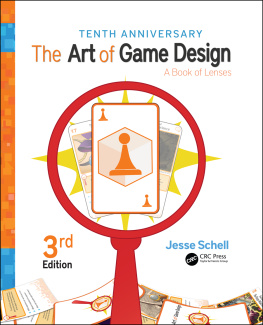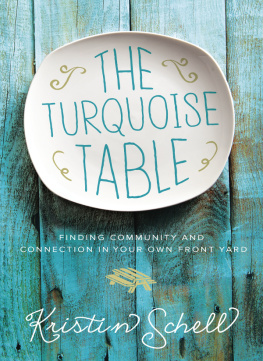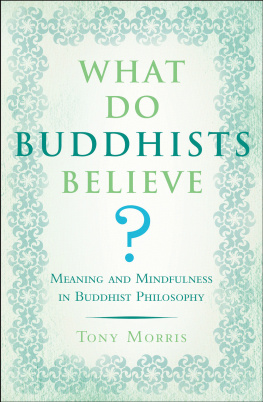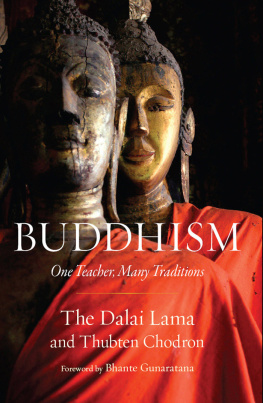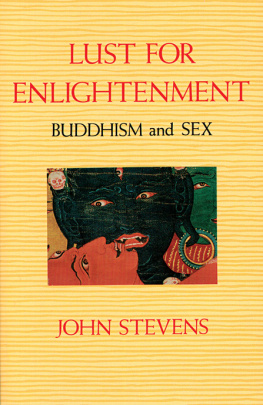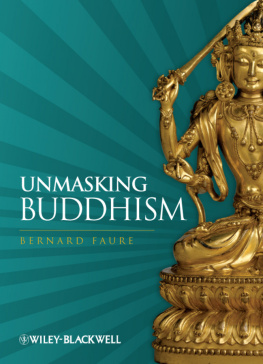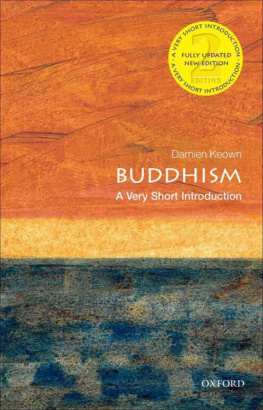The Five-Minute Buddhists
Buddhism Quick Start Guide
by Brian Schell
***
ISBN: 1507736061
ISBN-13:978-1507736067
Copyright 2015 Brian Schell / DailyBuddhism.com
All Rights Reserved
***
Introduction
[Note: This short introductory booklet is made of excerpts fromThe Five-Minute Buddhist.]
Welcome to the world of Buddhism!
Americans and others in the West have certain expectations andimages that come to mind when the word "Buddhist" comes up. Mostpeople have seen the Dalai Lama on the news or in magazines, and hehas almost become synonymous with Buddhism in general. The truth isthat by far, the majority of the world's Buddhists are not baldAsian men in orange robes. Buddhists look like you or me, justnormal people who try to fit the ideas developed by Buddha into anormal modern life.
What follows is a compilation of the very foundations ofBuddhism. There are many sects or denominations of Buddhism, andthey are all very distinctive, but the material that follows iscommon to all of them. Whether you want to practice Buddhism as areligion or as a philosophy, whether you want to experience Zen orTibetan, whether you want to pray or meditate, you'll need tounderstand the basics.
There are five short chapters:
What is Buddhism?
Who was the Buddha?
The Four Noble Truths
The Eightfold Path
The Five Precepts
What is not included?
You will not find any religious doctrine, prayers, or ritualsbeyond some very basic ideas. The Buddha set down some very clearphilosophical ideas, and those ideas were later expanded into mayvaried religious traditions. You will also find very little jargonor foreign words. I write for the Daily Buddhism website, whosegoal is to present basic Buddhism, in clear, jargon-free Englishwithout any of the pretentious mumbo-jumbo that seems to be sopervasive with many English Buddhist texts.
***
What is Buddhism?
Buddhism is a path of real-world practices and internalspiritual development which lead to insight into the true nature oflife. Practices such as meditation are means of changing oneself inorder to develop and perfect the qualities of awareness, kindness,and wisdom. The methods developed within the Buddhist traditionover thousands of years have created an incredible array ofresources for all those who wish to follow the path whichultimately culminates in Enlightenment or Buddhahood. Thefoundation of Buddhism is the Fourfold Noble Truth:
1. The world is full of suffering and stress.
2. The cause of this suffering and stress is desireand irrational grasping.
3. If this desire can be removed, then suffering andstress will be ended.
4. Desire can be removed by following the NobleEightfold Path:
Right View
Right Intention
Right Action
Right Speech
Right Livelihood
Right Effort
Right Mindfulness
Right Concentration
Because Buddhism does not include the idea of worshiping a God,some people do not consider it as a religion, but more of aphilosophy. The basic teachings of Buddhism are straightforward andpractical: nothing is permanent; actions have consequences; butchange is possible. Thus Buddhism addresses itself to all peopleirrespective of race, nationality, or gender. It also teachespractical methods such as meditation which enable people to makeuse of its teachings in order to transform their lives, to be fullyresponsible for those lives and to develop the desirable qualitiesof Wisdom and Compassion.
Buddhism began about 523 B.C.E., and the historical Buddha,Shakyamuni Buddha by name, was a Hindu from northern India. Hisbirthplace, Lumpini, is now part of Nepal. The "bible" of Buddhismis the "Tripitaka," or Three Baskets, is formed of the Sutta(Sutras of the Buddha), Vinaya (precepts for the Sangha), and theAbhidhamma (higher teachings, or analytical writings about thehigher states). The oldest extant manuscripts date to the firstcentury B.C.E. There are various sects of Buddhism, and they allplace more or less emphasis and value on written scriptures.
There are approximately 362 million Buddhists in the world.There are many different forms of Buddhism, which developed andgrew as it spread from India and Nepal throughout Asia. The threemain vehicles are Theravada (sometimes known as Hinayana), Mahayanaand Tantrayana (also known as Vajrayana). Theravada is the oldesttradition and is practiced predominantly in Sri Lanka, Thailand,Burma, Cambodia, and Laos. Theravada practice has the goal ofreaching the state of nirvana, becoming an arhat, and achievingliberation from the cycle of rebirth. Mahayana predominates inNorthern India, China, Japan, and Vietnam. Tantrayana predominatesin Tibet, Nepal, and Mongolia. Both Mahayana and Tantrayanapractice is primarily to help all sentient beings reachenlightenment and in doing so achieve both nirvana and Buddhahood.In Tantrayana additional tantric practices are used in order toachieve Buddhahood more quickly.
***
Who was Buddha?
The legend of Buddha's life has been told and re-told forthousands of years. There are versions of the story that are veryfanciful and magical, and others that are more down-to-Earth andrealistic. Nothing was written down during the Buddha's lifetime,so everything we know today came secondhand. Don't be too attachedto the factuality of the story, as most of it is probablymythological embellishment. There is a lot of mythology involvedwith Buddhism, and it is completely unnecessary to believe any ofit to follow Buddhism. The accuracy of the story is not really thepoint, but you should know the details to understand much of whathas been written about Buddhism. Here is probably the most commonlytold version of the tale:
Around 2500 years ago, King Shuddodana Gautama of the Shakyaclan ruled in northern India. He built a great castle and ruled hispeople well. One night, his wife, Queen Maya, had a strange dreamwherein she saw a white elephant enter her womb through the side ofher chest. She soon found that she was indeed pregnant. The peopleof the kingdom were thrilled that there would soon be a royalheir.
Planning to have the child at her parent's home, Maya traveledthere before the birth. Legend states that on April 8th, on the wayto Queen Maya's ancestral home, she stopped to rest in a garden.Reaching for a blossoming branch in the garden, she suddenly,painlessly, had the child. Unfortunately, a few days later, QueenMaya died.
The baby was named Siddhartha, which means "Every wishfulfilled," and was raised within his father's grand castle. Hisfather, of course, expected young Siddhartha to succeed him as Kingat some point in the future.
Fate, however, had other plans for Siddhartha. A wandering holyman came to the castle to see the King. He had a vision concerningthe young Prince and went to tell the King. He foretold that theyoung boy had two possible futures; either as a great King whowould rule the entire world, or as a great holy man. The Kingdecided immediately that his son would not leave the castle andlearn to be the great future King.
Young Siddhartha lived in the castle and grew up inside itsprotective walls, never seeing anything that would make him thinkof spiritual or religious things. His father was careful to removeall hints of the real suffering that accompany this world. ThePrince lived a perfectly shielded life. His father arranged amarriage, and then Siddhartha had a son of his own. Not long after,on a parade through the city, he spotted four sights that foreverchanged his life. First he saw a sick man. He had never been sickor even seen sickness before, and it shocked him. He asked his goodfriend and charioteer, "Will I become sick?" The charioteeranswered truthfully, "Yes, eventually we all get sick." Theycontinued through the city, and the Prince spotted a very old man.Never having seen an old person before, he asked, "Will I grow oldlike that man?" to which the charioteer answered similarly. Lastly,he saw a dead man being carried away in a funeral procession. "WillI die?" he asked, and did not like the answer. He then saw awandering holy man, begging for food and telling people who wouldlisten how to be good and live in peace. This struck Siddhartha asthe best way to live, so he decided to become a wandering monk.


